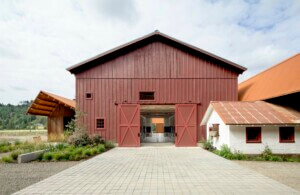Washington, D.C.-based Cunningham | Quill Architects and Stony Point Development Group have shared new photography of Dairy Market, a hybrid adaptive reuse and new construction project centered around the historic Monticello Dairy building in Charlottesville, Virginia.
Designed by prominent local architect Elmer Burruss, the 1937 Monticello Dairy building for decades served as both an architectural focal point and community gathering spot for residents of 10th and Page, a compact and historically African American neighborhood developed by John West, an emancipated slave who went on to become a prolific landowner and civic leader in Charlottesville. Once home to an ice cream parlor, event venue, and, for a while, a very large plastic cow sculpture, the column-fronted milk processing facility ceased operations following a change of ownership in the mid-1980s. It went on to house an eclectic number of businesses per The Daily Progress, including a martial arts studio, battery retailer, indoor paintball park, recording studio, and a number of breweries and restaurants. As tenants came and went, the building itself fell into a state of neglect and its future remained hazy.
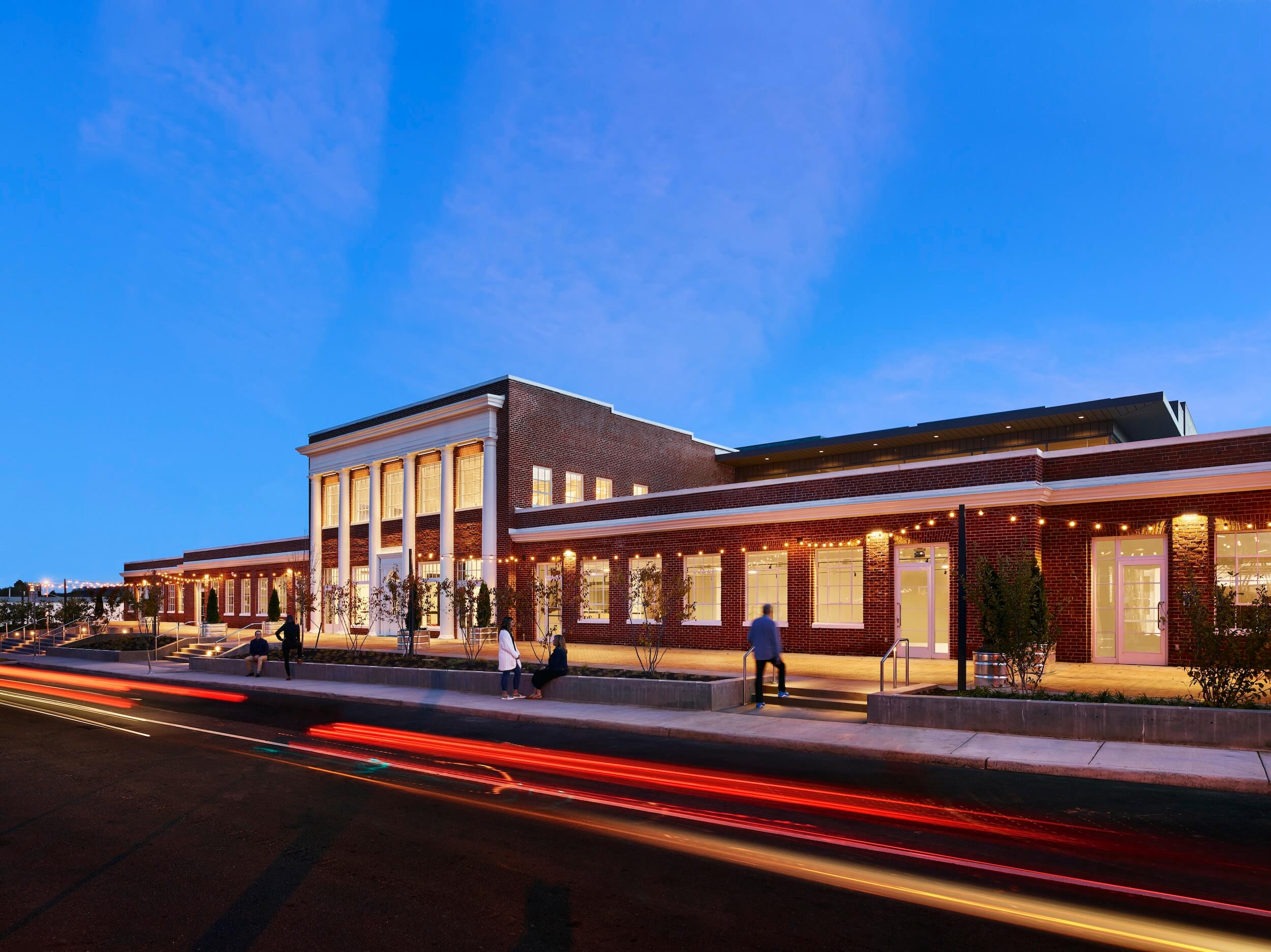
When Stony Point Development purchased the 4.5-acre property at 946 Grady Avenue in 2017 with plans to transform it into a mixed-use development, they certainly had their work cut out for them, although the sturdy building, with its thick brick walls and concrete flooring, was in good structural shape and its highly walkable location near downtown and the University of Virginia was ideal.
The three-phase Dairy Central development at the site will ultimately give way to new construction for rental apartments, affordable housing, retail, and dedicated office space that will house community organizations. However, the recently completed first phase, which involved the meticulous renovation and restoration of the old dairy building, is at the heart of the project. Phase one, which broke ground in the summer of 2018, also includes new construction, namely a four-story office addition also designed by Cunningham | Quill.
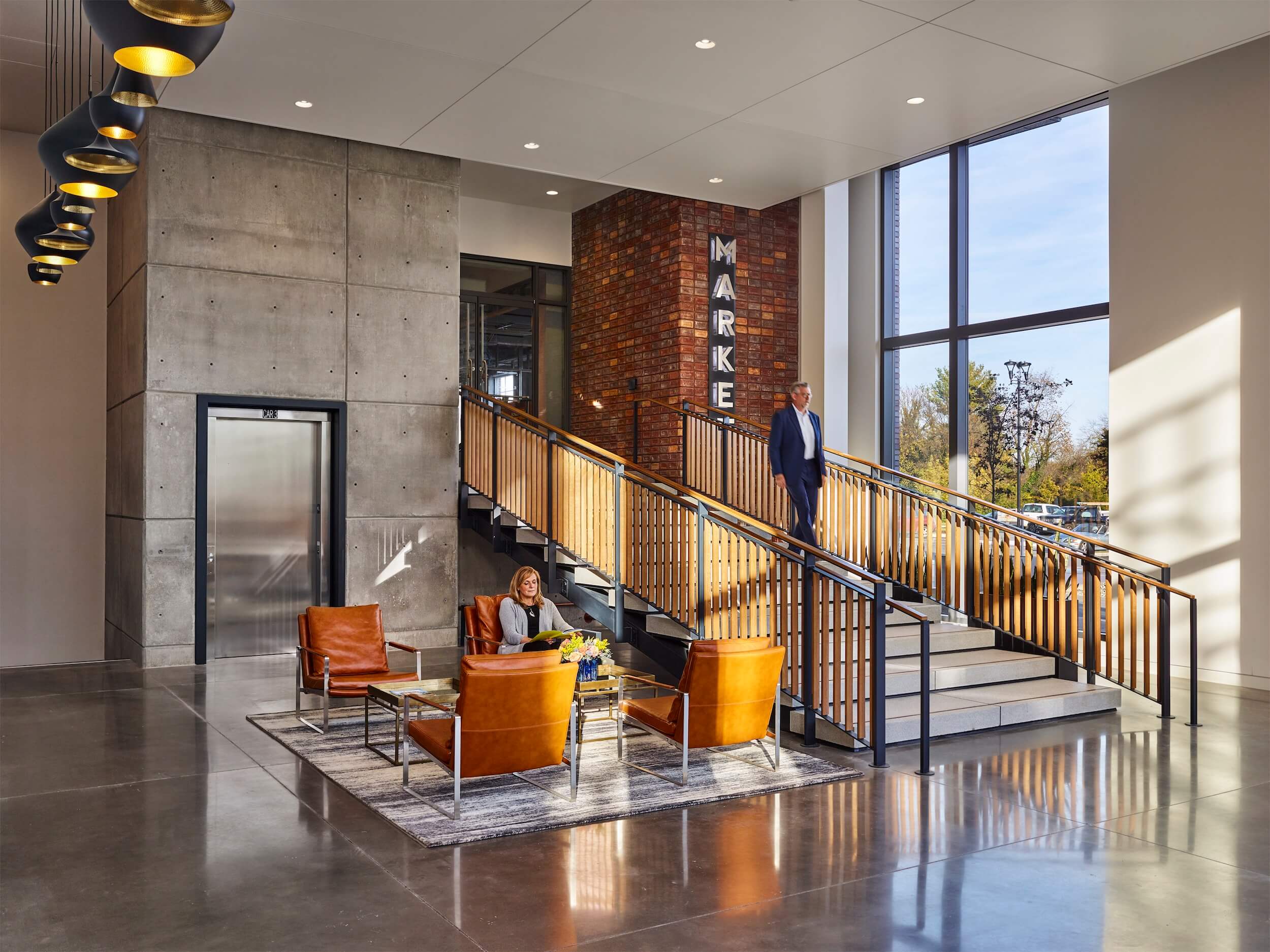
After pandemic-related delays, the reborn Monticello Dairy reopened this past fall—COVID-19 precautions firmly in place—as a bustling 23,000-square-foot food hall that honors the building’s original agri-industrial roots while serving as a “community-driven venue” that, according to a press release, has the power to draw people back to a local landmark had been all but forsaken in recent years.
“To that end, it was important to keep the spirit of the original building by preserving its exterior and incorporating found elements into a mix of new finishes and modern updates inside,” as the press released explained. “The development and design team also took steps to preserve the soul of this Charlottesville landmark through careful scale and massing of the office addition, at the same time incorporating cutting-edge building systems and twenty-first-century amenities that modern tenants have come to expect.”
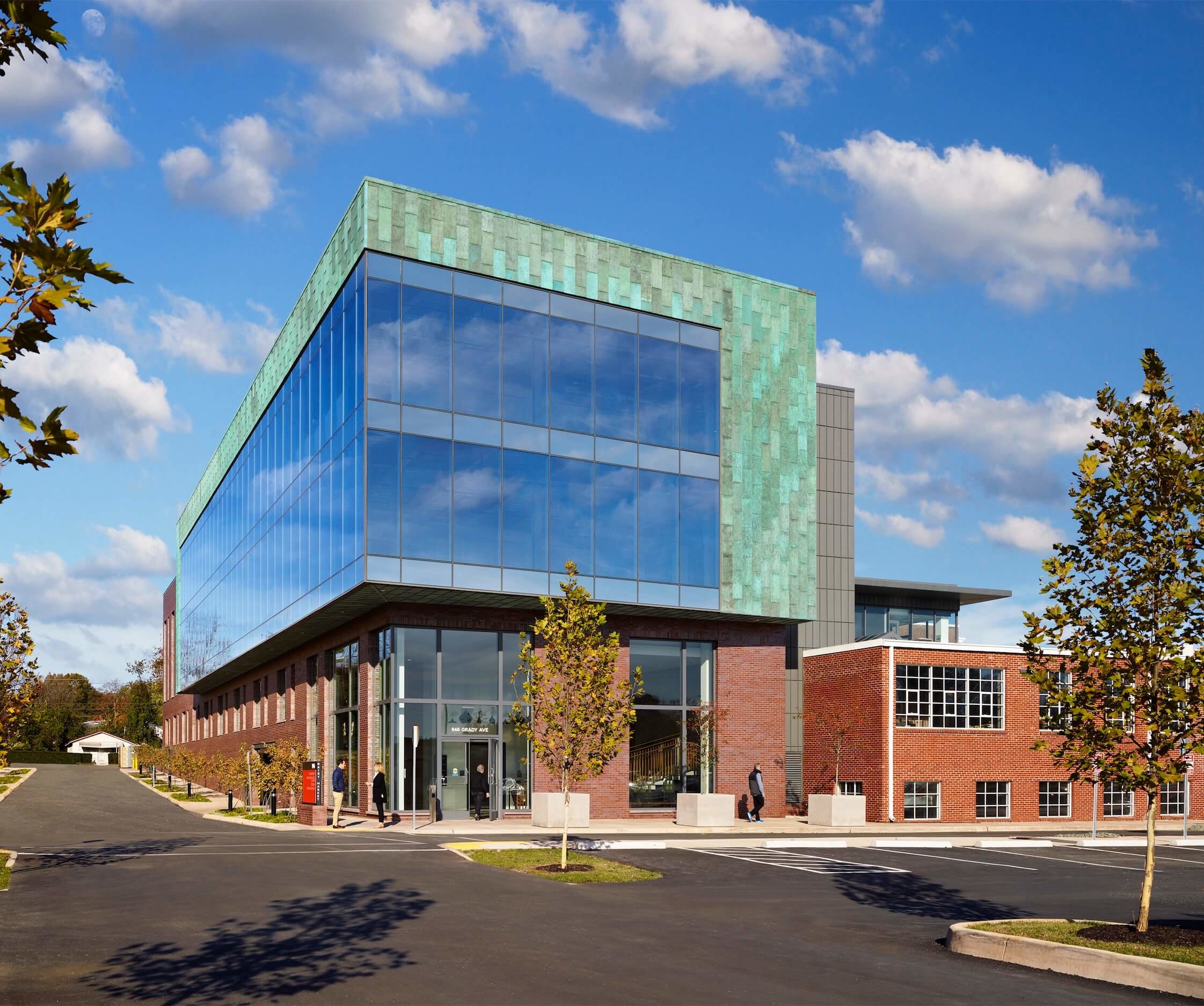
The revamp of the Monticello Dairy building started at its entrance and included restoring the structure’s front facade and creating a new terraced landscape that includes spacious patios for outdoor dining as well as new building signage and architectural lighting. The design strategy was, according to the team, one that “not only creates indoor-outdoor experiences but refocuses attention back to the historic facade and the main entrance while allowing guests to feel welcome both day and night.”
Inside, the exposed brick walls and concrete flooring were largely left intact in homage to the building’s history while the interior palette references the old ice cream parlor’s classic black and white subway tile flooring. In addition to preserving the character of the dairy while transforming it into a modern food hall, architectural elements salvaged from the old building during construction like historic bricks were incorporated into the new office building. While the aforementioned plastic cow statue that once stood outside the dairy has never been found, a new mural inspired by the likeness of emblematic faux bovine—created using historic photographs—now lives on in its place.
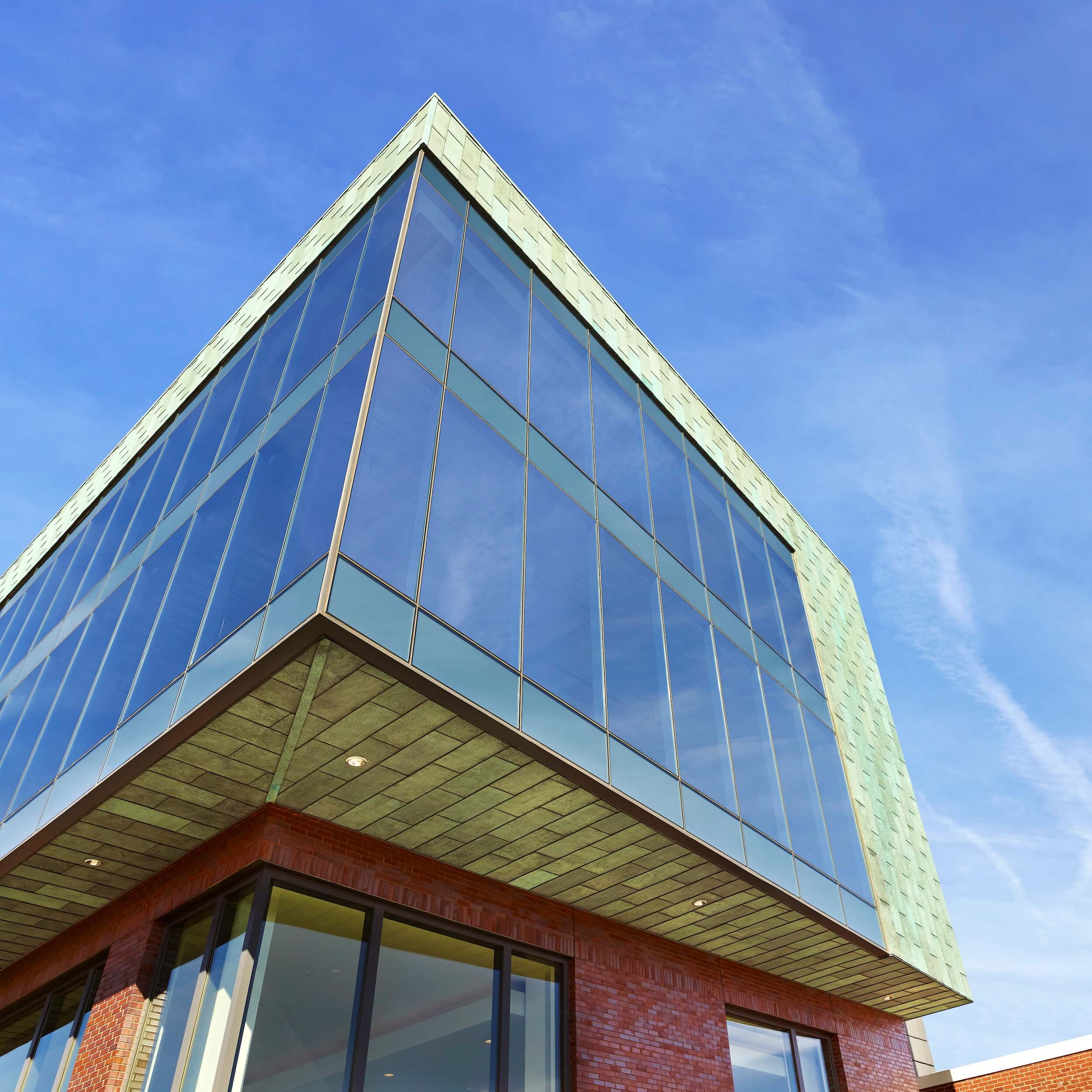
As for the new office building located at the rear of the old dairy, the design team described its exterior as being “a combination of materials that complement the Dairy Market and celebrate its original industrial function, as well as clearly define the new addition. The use of a slightly glazed iron-spot brick provides a seamless transition to, but clear delineation from, the Virginia red brick found on the Dairy Market building.”
With its upper floors wrapped in a glass curtain wall, the addition’s facade also include “large iconic elements” realized in verdigris patinated copper and gray zinc, both of which “are traditionally found on historic civic buildings and used for durability and to project strength and importance” according to the architects.
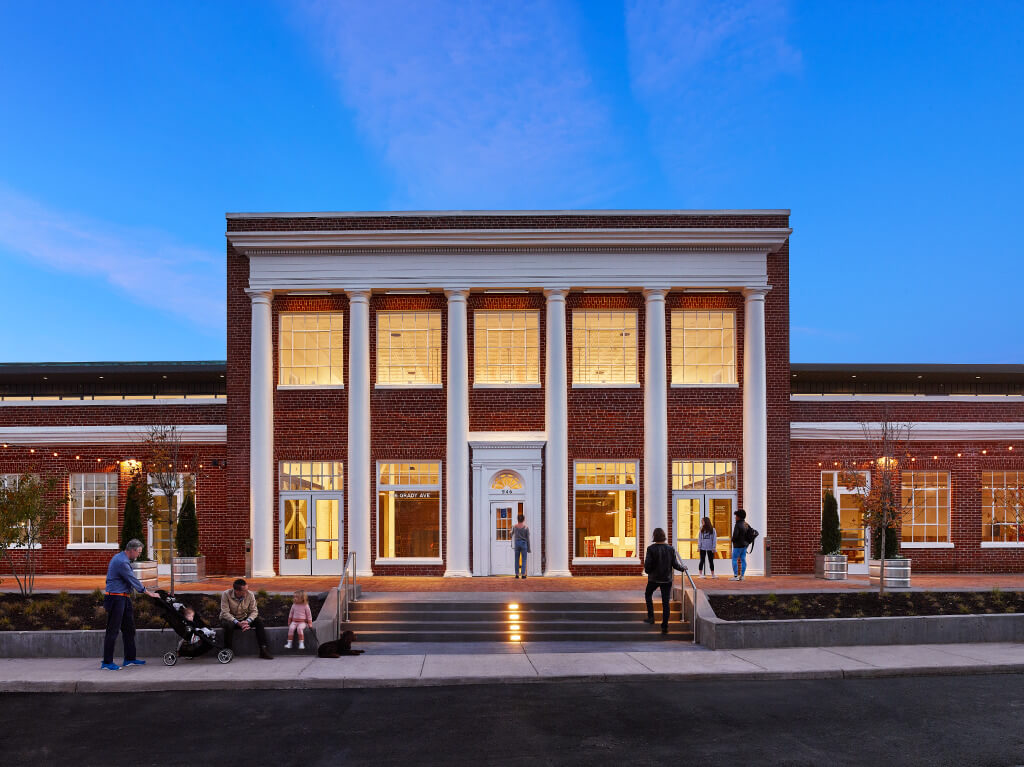
“We’re so proud of what we’ve accomplished with Dairy Market and our adaptive reuse work over the past three years,” said John Michael Day, associate principal at Cunningham | Quill. “Our goal with this project was to create a community-oriented space that preserved and respected the historic aspects of the original and beloved Monticello Dairy building while also breathing new life into it and giving it a new purpose. “
Nine merchants are currently open for business at the Dairy Market food hall, including a brewpub, ice cream joint, and a throwback-y drugstore soda fountain-inspired cocktail bar, with more to open soon. When future phases are complete, the larger Dairy Central development, which is set to be the largest mixed-use development in the downtown Charlottesville area, will include a total of 50,000 square feet of Class A office space (major tech tenants as well as the nonprofit Virginia Humanities have already signed on and are set to move in), 180 one- and two-bedroom apartments, 6,000 square feet of event space, and more.










